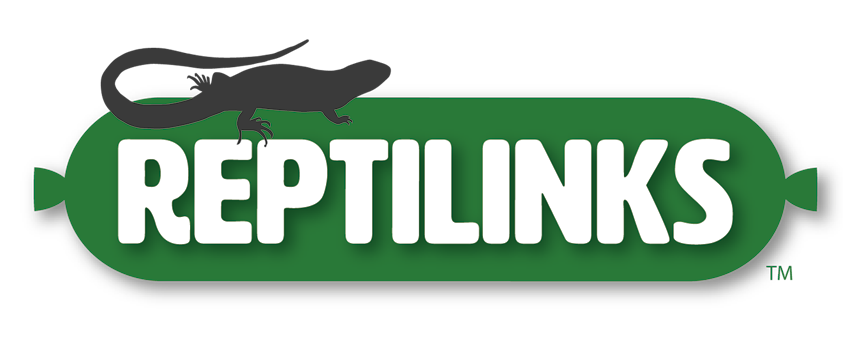Reptiles and amphibians may not have the brainpower of humans, but studies are increasingly showing that they may be smarter than we give them credit for. To keep their brains active and engaged, it’s important for keepers to provide enrichment opportunities.
But how do you create enriching scenarios with animals that still require access to their normal heating, humidity, and species-specific environment? Unlike warm-blooded dogs that can go for a romp in the snow or play fetch in a public park, a reptile’s opportunities may be more limited for safety and health reasons. Instead, consider integrating Reptilinks as a way to open up an entire realm of potential enrichment activities.
What Does Enrichment Mean?
The term “enrichment” is a broad word encompassing an almost uncountable range of potential behaviors and opportunities. Anything that stimulates your reptile’s brain can be enriching—letting them engage in instinctual or natural behaviors, encouraging them to explore new ideas, or challenging them with puzzles and unique scenarios.
Keeping your animal’s brain engaged is a vital part of their overall health. When animals are bored, they can become stressed, resulting in hormonal changes due to the presence of cortisol and other compounds. Over time, this can cause gradual shifts that lead to bigger-order health issues, such as disruptions to the pituitary system and reproductive harm.
Enrichment doesn’t have to be challenging—either for your reptile or you! Even a few opportunities each week for your pet to experience something new or puzzling can be enough to activate their brains and keep them in good health.
Enrichment Ideas Using Reptilinks
When it comes to enrichment ideas, Reptilinks are your ace in the hole. They’re versatile in usage and work as a nutritionally complete snack, all in a durable and easy-to-handle casing that your animal can digest. Some of the ways you can use Reptilinks for enrichment include:
- Puzzles
Reptiles may not be solving crosswords, but they can establish conclusions and identify patterns. Puzzles are a tried and true method of providing enrichment for animals. Because Reptilinks are not messy, they’re easy to place inside puzzle balls or other challenge items. They will roll and flop easily rather than becoming smeared onto the puzzle. And when your reptile finally grabs one, they’ll be able to remove it in one piece as a sufficient reward for their hard work.
Try rolling balls with holes or flip boards that have food covers that can be pushed or moved to reveal a treat.
- Scentwork
Most reptiles (and many amphibians) smell using their mouths rather than their nose holes. Whether through a flick of the tongue or a taste of water into their nares, these pets spend much of their time in the wild identifying the smells around them to stay away from predators and locate prey. Reptilinks can serve as an enriching centerpiece for scentwork so that your animal can use their natural talents.
Try thawing a Reptilink and dragging it through the enclosure, making sure to rub it onto various surfaces. Then, hide it somewhere unusual but not inaccessible. Your pet can spend time carefully following the trail as if they’re hunting for real prey!
- Foraging
In the wild, many animals (ambush predators aside) must find their food through foraging, or actively exploring their environment. Try hiding a Reptilink among your enclosure’s decorations to facilitate this natural behavior. Alternatively, try a snuffle mat, which provides loose flaps of fabric in which you can hide a link. Your animal will need to use their claws and snout to dig carefully and explore the disarrayed fabric for the hidden Reptilink inside.
- Swimming
For animals that count water as part of their natural habitat, providing sufficient enrichment can be an even greater challenge. One of the best things about Reptilinks is that their casing can stand up to water for some time—which means that your pet can enjoy links even underwater! Try gently flicking them through the water with tongs, akin to the movement of a fish (or your animal’s other natural prey), or splash links across the top of the water in a basin to encourage your normally terrestrial animal to plunge in for a quick snack.
- Target Training
Target training is the process of getting your animal to associate touching a target (such as a ball on a stick) with a reward. This can be extremely helpful for getting your pet into a carrier for the vet, removing them from a dangerous situation, or even teaching them tricks. This entire process is extremely mentally stimulating, and Reptilinks are an ideal way to begin the target training process.
You’ll want to reward your pet each time they do the targeted behavior (typically, it’s touching the target with their nose). Touch, reward, repeat. Consider purchasing links that are smaller than your animal would normally use for a meal so that you can feed multiple in one sitting—remember, they’re calorically dense thanks to all that nutrition!
Alternatively, cut your links into smaller pieces to reward your pet each time they come to touch the target. Because Reptilinks are so delicious and come in so many potential combinations, your pet is more likely to treat them as a unique high-value food item and work extra hard for them.
- New Food Items
Speaking of the many potential ingredient combinations for Reptilinks, this in itself makes them great for enrichment. Just like humans would get bored of eating even their favorite food every day for a year, your reptile is no different. Offering unique food pairings or entirely new types of prey can stimulate the brain. With mixtures ranging from bugs and veggies to full animal meat and even bullfrog, you have a lot of ways to keep your pet’s diet exciting with Reptilinks.
Tips for Integrating Enrichment
Those who haven’t regularly incorporated enrichment activities into their keeping practices so far might find the prospect daunting. But don’t feel overwhelmed! There are a few things to remember, and perhaps the most important is this: start small.
Asking your animal to walk (or slither!) across the room and touch a target when it’s their first time even seeing a target is setting yourself up for disappointment. That’s a big task! Instead, start with small steps, like introducing the target in front of their face and then rewarding when they sniff it. Over time, you can increase the complexity of the task you are asking. This goes for toys, too; start with simple puzzle balls before graduating to ones with smaller holes or more complex features. Many puzzle toys will even have a label describing them as “easy” or “advanced.”
Another thing to remember is that there is no “failure.” If your pet didn’t get the link out of their puzzle ball, their enrichment didn’t fail! Animals don’t always capture their prey in the wild. Consider whether the puzzle was too hard or whether they simply weren’t invested, make any adjustments you deem necessary, and try again another day. Some animals just have certain puzzles or activities they’re not really into, and that’s okay.
Finally, remember to learn from your pet. If you notice that your reptile loves scouring their enclosure for links but becomes uncomfortable and uninterested when you try to do the same exercise in a new room, pay attention. Enrichment works best when the animal feels comfortable and safe, so learn from what your animal likes and dislikes to tailor their activities to their interests and motivations.

